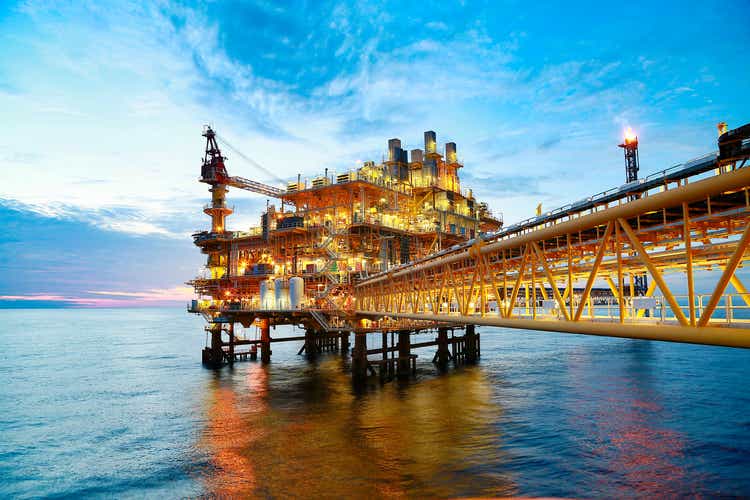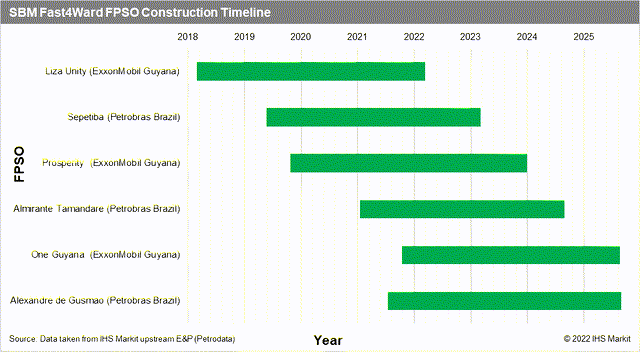curraheeshutter
Among technology and processes that seek to deliver faster to-market solutions and save on operators’ costs along the way is the standardised approach to building new floating production systems (FPS). The aim is to reduce cycle time to first production and reduce overall cost of projects. The most notable of these approaches has been SBM Offshore’s (OTCPK:SBFFF, OTCPK:SBFFY) Fast4Ward concept for standardised floating production, storage and offloading systems (FPSOs), which was first introduced in May 2016. The basic design concept, which has been approved by both Bureau Veritas and ABS, consists of a generic newbuild-hull with the ability to accommodate a catalogue of topsides modules for all FPSO systems. This allows for maximum interchangeability of the modules depending on each project’s needs, without disrupting the overall functionality. SBM claims the design accelerates delivery of the FPSO by up to 12 months, while enhancing quality and reliability, and reducing overall costs.
In August 2017, SBM announced that it was moving ahead with the Fast4Ward project and placed an order for a newbuild multi-purpose hull with Shanghai Waigaoqiao Shipbuilding (SWS) in China on speculation. This was shortly followed by the first contract based on SBM’s Fast4Ward programme, from Exxon Mobil (XOM) for the FPSO Liza Unity, which is now producing offshore Guyana as of February 2022. Following the programme’s success, SBM has since gone on to order an additional five Fast4Ward hulls: two in 2018, two in 2019, and one in 2020. This has also been coupled with five contract awards for the generic hull design: two from Exxon Mobil offshore Guyana and three from Petrobras (PBR) offshore Brazil.
SBM Fast4Ward FPSC Construction Timeline (Author)
Similar to this new and proven design, but in the liquified natural gas (LNG) space, is New Fortress Energy (NFE), which has recently developed a Fast LNG concept. The concept pairs the latest advancements in modular, midsize liquefaction technology with repurposed drilling units or similar offshore infrastructure to enable a much lower cost and faster deployment of floating liquified natural gas (FLNG) facilities. Since rolling out the technology, NFE has had interest from three parties: two in West Africa and one in the Gulf of Mexico. In December 2021, the company signed a Memorandum of Understanding (MoU) with the Mauritanian authorities for the development of an energy hub, for which NFE will deploy its Fast LNG concept. This was followed by an announcement in February 2022 that NFE had executed a Heads of Agreement (HoA) with Eni (E) for the deployment of the technology off Republic of the Congo. Finally, in late March 2022, NFE advised that it had filed applications with relevant US authorities to request all necessary permits and regulatory approvals for a new offshore LNG liquefaction terminal off the coast of Louisiana. NFE expects the Fast LNG facility in Congo to be the first on-line and may commence production as soon as second quarter 2023.
FPS providers are constantly implementing new technologies and processes to capitalise on fluctuating market demand. The standardised approach to building and converting floating production platforms has been successful in doing this so far by reducing time to market and overall costs, and has positioned providers to continue to meet these demands moving forward.
Editor’s Note: The summary bullets for this article were chosen by Seeking Alpha editors.


Be the first to comment